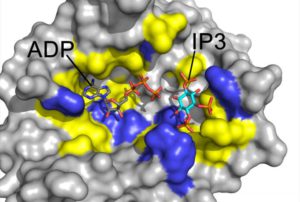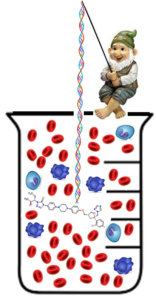Submitted by Aspergillus Administrator on 20 January 2014
 Aspergillus fumigatus is a ubiquitous fungus that all humans are exposed to on a daily basis, but it rarely causes disease in healthy people. Ordinarily, when people breathe in Aspergillus spores (or conidia), the immune system kicks in and clears the fungus rapidly. In immunocompromised hosts, however—such as those with AIDS or undergoing transplantation—it can take hold and cause a variety of diseases, not least of which is an invasive form that is fatal in up to 40% of cases in the Western World.
Aspergillus fumigatus is a ubiquitous fungus that all humans are exposed to on a daily basis, but it rarely causes disease in healthy people. Ordinarily, when people breathe in Aspergillus spores (or conidia), the immune system kicks in and clears the fungus rapidly. In immunocompromised hosts, however—such as those with AIDS or undergoing transplantation—it can take hold and cause a variety of diseases, not least of which is an invasive form that is fatal in up to 40% of cases in the Western World.
This particular fungus naturally occupies a niche, making it a prime candidate to cause infection in a variety of hosts. It can survive a wide number of environmental conditions, for example, A. fumigatus grows optimally at 37°C and at pH between 3.7-7.6. However, it has been seen to survive between temperatures of 12-65°C, and pH levels between 2.1-8.8, making it a versatile organism. This, combined with it’s ability to disperse throughout the air with ease, makes it a prime candidate to spread and rapidly adapt to it’s host environment.
It is estimated that humans breathe over 100 A. fumigatus spores per day, and it uses sialic acid to bind to the respiratory systems of humans. When immune mechanisms are lacking to sufficiently clear these conidia, they rapidly germinate at body temperature and allow for extensive growth. By utilising a number of gene expression techniques, A. fumigatus reduces its need for iron, nitrogen and glucose, and learns to evade pH and oxidative stresses imposed upon it. Furthermore, it produces certain metabolites—such as gliotoxin—which are known to suppress immune mechanisms and even hurt immune cells.
These defensive and offensive mechanisms allow for rapid growth, and subsequent deterioration of human hosts, in immunocompromised individuals. In healthier hosts, such as those with allergic bronchopulmonary aspergillosis (ABPA), it is less an out-right infection but more allergic in nature. Here the fungus rarely evades the immune system effectively enough to outright spread throughout the lungs and body, though it is able to penetrate the immediate alveolar environment in the lungs. Over time, metabolic production can damage the linings of the lungs, but the disease is far less severe than in immunocompromised equivalent cases.
News archives
-
Title
Date



 ,
, 






